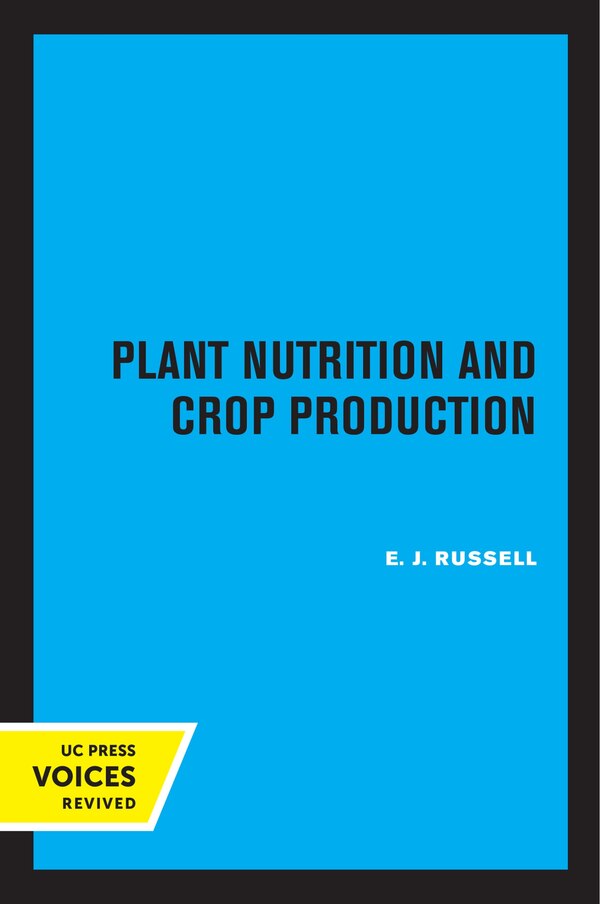Home
Plant Nutrition of Greenhouse Crops by Cees Sonneveld, Hardcover | Indigo Chapters
Loading Inventory...

Plant Nutrition of Greenhouse Crops by Cees Sonneveld, Hardcover | Indigo Chapters
From Cees Sonneveld
Current price: $481.95


From Cees Sonneveld
Plant Nutrition of Greenhouse Crops by Cees Sonneveld, Hardcover | Indigo Chapters
Current price: $481.95
Loading Inventory...
Size: 1 x 9.25 x 2.02
*Product information may vary - to confirm product availability, pricing, shipping and return information please contact Coles
Plant nutrition in greenhouse cultivation differs in many essential aspects from field crops and justified the development of a special publication on this subject. The high productions realised and the specific produce quality requirements ensure high uptakes of nutrients and a careful tuning of the application. The covering with glass or plastic is responsible for specific climatic conditions, which in modern greenhouse can be fully adjusted to the requirements of the crop by automatic climate control. The natural precipitation is excluded, thus, the water has to be applied in greenhouses by artificial irrigation of water from different origin. On thing and another involves that the growing conditions are more or less completely controlled. This especially holds when the crops are grown in substrates. The high uptake of minerals in greenhouses requires high fertilizer additions. The quantities absorbed by many crops are that high, that it is impossible to supply the required quantities of nutrients as a base dressing at once. Therefore, top dressings are common practice and are carried out together with the supply of the irrigation water. Therefore, fertigation is common practice and in greenhouses already for many years. Specific systems have been developed for the application of the right concentrations to keep the level of nutrients in the root environment on the optimum level for the performance of the crop. Beside the management of the nutrient application, greenhouse growers also need a close control on the salt accumulation. This accumulation is closely connected with the quality of the irrigation water. Moreover, also the addition of the fertilizers plays a role in the salt accumulation in the root environment. Therefore, choice of the fertilizers used is important to prevent accumulations of residual salts possibly supplied with the fertilizers. On the other hand, for a number of crops the level of fertilizer supply is not only focussed on the nutrient requirements, but also utilized to realize a certain salt concentration in the irrigation water. In this way the osmotic potential of the soil solution is affected and this characteristic is an important tool for the grower for the regulation of the growth of the crop and the quality of the produce. When the salinity passes certain threshold values, the growth and production of crops is reduced, but the quality of the harvested produce of some crops is improved. Such regulations are very precisely adjusted to the crops grown and to the growing conditions in the greenhouse. Another line is the development of sustainable production methods. For the main subject discussed in this book, namely plant nutrition, methods for an optimum use of fertilizers with a minimum environmental pollution were developed last decennia. In this field the development of the cultivation in substrates offered excellent possibilities for an optimal use of water and nutrients. With this growing method it has been proved that it is possible to grow greenhouse crops without any discharge of minerals to the environment. The conditions required for such cultivation are thoroughly discussed. Moreover, growing in substrates offers suitable opportunities for optimization of yield and quality, because of the adequate control on the conditions in the root environment, like the supply of water and nutrients. However, this requires a perfect management of water and nutrient supply. Not only for the fact that plants are grown in very small rooting volumes and therefore, mistakes with irrigation and fertilizer supply easily will damage the crop, but also for the fact that the fertilizer supply is complicated. For substrate growing it is not enough that some nutrient elements are controlled, like with soil grown crops, but the full packet of nutrients essential for plant growth will be kept in view. This means that the addition of six macro nutrients and at least six micro nutrients will be regulated, with respect to the right concentration and mutual ratios in the irrigation water. Physical and chemical properties of substrates essentially differ and a right use of these properties is necessary for a right interpretation of the nutrient and salinity status. To this purpose the grower is supplied with detailed recommendations developed by the research stations founded in The Netherlands. The horticultural research stations in The Netherlands developed numerous tools to the growers often in cooperation with the horticultural industries and laboratories. An example of such cooperation is the development of soil and substrate testing methods by the research stations. These methods offered excellent possibilities for a frequent control for the salt and nutrient status in the root environment. Together with these methods schedules | Plant | Plant Nutrition of Greenhouse Crops by Cees Sonneveld, Hardcover | Indigo Chapters















